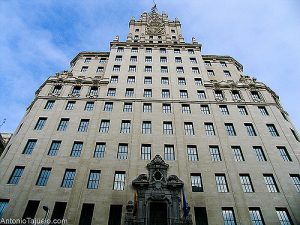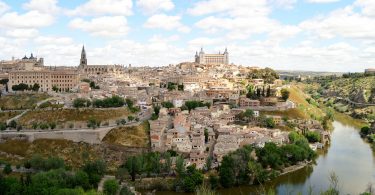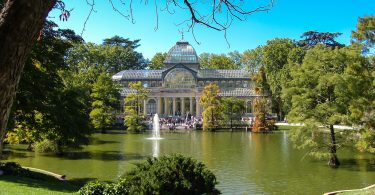There are more than three million people residing in the Spanish capital, an urban sprawl divided into 21 neighborhoods, each one with its particularities, customs, and mysteries to be discovered. All these things make Madrid an incredible city with thousands of options to explore. There are beautiful corners, huge parks, historical monuments, fascinating museums, lively shopping areas and a vast offering of cultural activities. Any travel guide you find is sure to highlight all of Madrid’s most famous points and sights, but there is so much more to Madrid than what you’ll find in your Rick Steves book; things that are more hidden, but no less fascinating. Today in this article from ShMadrid, we want to tell you about some of the hidden curiosities of the Spanish capital.
Related article: Day Trips From Madrid: Explore the Region
A city with so much to discover
Walking through the city center, you’ll arrive at calle Mayor 61 where you can see the thinnest house in the city, also the spot where the famous Spanish writer Calderón de la Barca lived and eventually died. Also on this street at Mayor 1, you’ll find what is considered to be the one of the oldest apartment buildings in the city. Known as the Casas de Cordero, these buildings were constructed in 1845. Madrid also has a very, very small street that is only 20 meters long called calle Reompelanzas, between the streets Preciados and del Carmen. In addition, did you know that the Spanish capital has the oldest restaurant in the world? That’s right – while many other restaurants in the world may try to claim this title, the Casa Botin (also known as El Sobrino de Botín) has this recognition on behalf of the Guinness Book of World Records. Founded in 1725, this restaurant has hosted famous figures throughout recent history such as Truman Capote, Benito Peréz Gladós and Ernest Hemingway. The Edificio de Telefónica, right on Gran Vía, was the tallest skyscraper in Europe during the 1920s and was also where the first phone call between the United States of America and Spain was made. If you’re a fan of the Netflix show Chicas del Cable, you’ll know what we’re talking about.
Related article: History of Madrid: The Capital of Spain
Madrid, like any major European city, also has a metro station that is famously known to be haunted. The Chamberí metro station closed in 1966 due to the inability to expand, but today is open and functioning like clockwork. However, the true ghost station in Madrid is the Arroyo de Fresno, which was never used. Another somewhat disturbing curiosity related to the metro is at the Tirso de Molina stop; buried at this stop are the monks of a former convent, whose cemetery was under the station when it was built. According to the legend, you can hear the cries of the dead monks at night. For other ghost tour lovers, there is also the option of visiting the statue of Satan himself in Buen Retiro Park – the Monumento del Ángel Caído, or the Monument of the Fallen Angel. You may not believe it, but this statue is also precisely 666 meters above sea level. Another sight that you’ve surely heard of is Rastro, a famous and incredibly crowded market that is celebrated on Sundays. Want to know where its name comes from? It was an old matador area where it was normal to come across rastros, or traces, of blood. Finally, we can’t end this article without mentioning one of the most symbolic areas of Madrid. The Puerta del Sol, along with being famous in and of itself, is also Kilometer Zero in Spain, meaning that from here, all distances to the other points of the country are measured.
*Main photo by netjcmv via VisualHunt
What other curiosities of Madrid do you want us to know?








